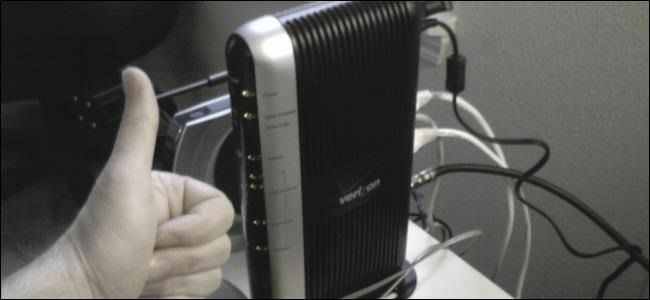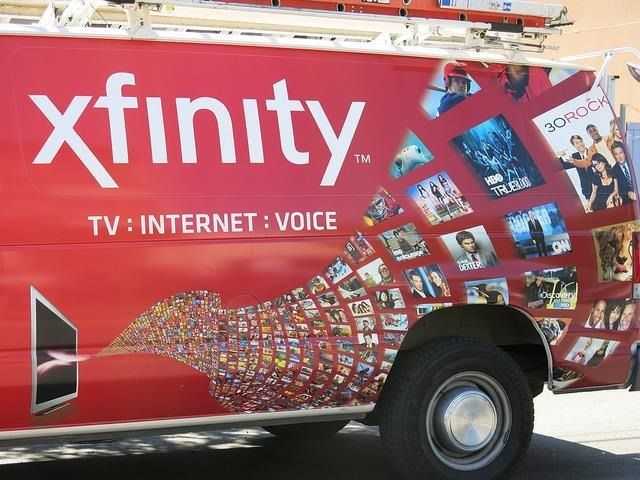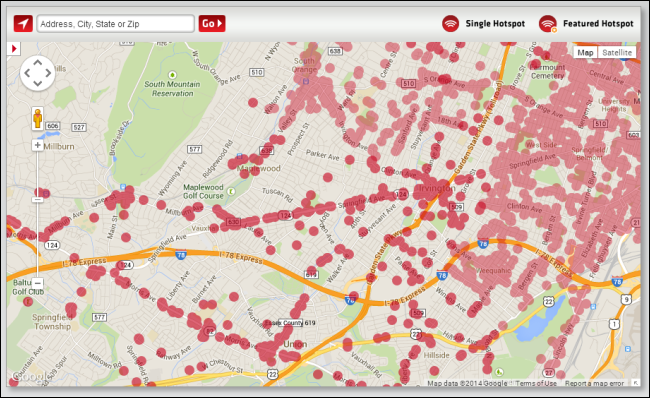Quick Links
More Internet service providers are now providing their customers with modems that function as routers -- and those units may also be public hotspots. This sort of feature is common in Europe, but it's now arriving in North America.
Editor's Note: we aren't fans of Comcast, as they are a fairly awful company. We are, however, fans of truth and honesty, and this article is a product of that.
We're focusing on Comcast's XFINITY WiFi feature here because it's been the subject of some controversy in the press. Other US-based Internet service providers will likely follow suit with similar features.
How the Hotspot Feature Works
Comcast's XFINITY WiFI Hotspot is one example of such a feature. Here's how Comcast's FAQ explains it:
Your XFINITY Wireless Gateway broadcasts an additional “xfinitywifi” network signal for use with XFINITY WiFi. This creates an extension of the XFINITY WiFi network right in your home that any XFINITY Internet subscriber can use to sign in and connect. This XFINITY WiFi service is completely separate from your secure WiFi home network.
Essentially, the combined modem/router unit your ISP provides you with will create two separate WI-Fi networks. One is your home Wi-Fi network, while the other is an "xfinitywifi" network. Any XFINITY Wi-Fi subscriber -- this includes other XFINITY customers and people who pay to connect to the xfinitywifi network -- can connect to this Wi-Fi network and access the Internet.
The Wi-Fi signal is coming from inside your house and uses the same physical hardware, but it's considered an entirely separate connection. Traffic coming from the public Wi-Fi network won't count against your bandwidth cap, if you have one. People connecting to the public network will be isolated from your private Wi-Fi network so they can't snoop on your network file shares or try to infect you with malware.
What Do You Get Out Of This?
As a customer of the ISP, you have the ability to connect to these hotspots for free. Let's say you and many other people in your city have Comcast XFINITY Internet. When you leave your house and go elsewhere, you can connect to any of these Comcast XFINITY Wi-Fi networks for free because you're a customer. You just need to provide your Comcast XFINITY account information. Essentially, this feature allows your Internet service provider to provide you with an additional service, putting all those modems in the wild to good use providing additional Wi-Fi.
So, that's the advantage for you -- you get free access to more Wi-Fi hotspots. Comcast's website even provides a map of where these hotspots can be found, with free Wi-Fi hotspots available throughout residential areas where they wouldn't otherwise be available.
It's Not Like Hosting an Open Wi-Fi Network
This sort of feature doesn't have the same dangers of operating your own open Wi-Fi hotspot. For example, if someone downloaded pirated content on an open Wi-Fi network you set up, you might run afoul of the Copyright Alert System and get into trouble. If someone downloaded child pornography via your public Wi-Fi networks, the police may come to your door and arrest you. It's all associated with your IP address.
Because the public Wi-Fi signal these features provide is treated as a separate connection, you won't get into trouble for anything anyone does with it. It should be a separate IP address and usage will be associated with the account the other person signs on with. The typical risks of operating an open Wi-Fi hotspot don't apply.
Are There Downsides?
One question you might ask is whether those additional devices connecting to your Wi-Fi network and using bandwidth will degrade your home network connection. After all, you wouldn't want to put up with slower Wi-Fi and not get the speed you're paying for just so other people can use your router.
Speed degredation likely shouldn't be a major concern. Internet service providers should tune this feature so that your home connection won't be noticeably degraded by other people using it. For example, Comcast states "The broadband connection to your home will be unaffected by the XFINITY WiFi feature." They may accomplish this by prioritizing traffic from your home connection and throttling bandwidth devices on the Public Wi-Fi network can use. The public Wi-Fi connection can just use that extra bandwidth that normally goes unused -- you're probably not using your connection to its maximum capacity all day.
Comcast does note that "Your in-home WiFi network, as well as XFINITY WiFi, use shared spectrum, and as with any shared medium there can be some impact as more devices share WiFi. We have provisioned the XFINITY WiFi feature to support robust usage, and therefore, we anticipate minimal impact to the in-home WiFi network." This is normal -- the more routers and Wi-Fi-enabled devices in an area, the more interference there is as devices compete for the air waves. However, this shouldn't result in a noticeable decrease in Wi-Fi speed. Comcast limits the public Wi-Fi network to five devices at a time and other ISPs will likely follow suit, so you won't have 100 other devices connected to your home router.
Should You Care?
You can probably disable this feature if you don't like it. For example, Comcast allows you to disable it by visiting their account management page or calling their phone number and asking. Other ISPs will likely allow you to disable it in similar ways.
Of course, you likely won't see any slowdowns from leaving this feature enabled -- assuming your Internet service provider sets things up correctly -- so there should be no harm from leaving it enabled. This sort of feature provides you with more free Wi-Fi hotspots you can connect to and helps other people get free Wi-Fi, too. It's a way to share Internet access without any slow-downs or legal risk, so why not leave it enabled? The more Wi-Fi the better.
No, this article was not an advertisement for Comcast -- it's an explanation and stamp of approval for a feature that's provided in Europe by companies like Fon and ISPs like BT, SFR, and free.fr. Comcast is the first ISP we're aware of that now provides this feature in the USA. This sort of feature isn't something to be afraid of -- it's a good thing.
Image Credit: Mike McCune on Flickr, torbakhopper on Flickr, Terry Johnston on Flickr




